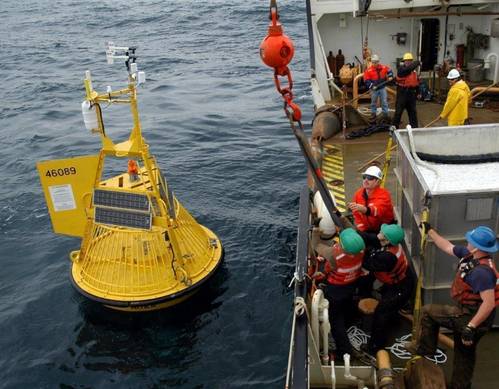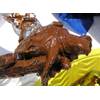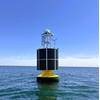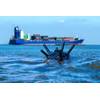Buoy Data Helps Mariners to Weather Storms

The Coast Guardsmen at the National Data Buoy Center leverage more than 70 years of combined Aids to Navigation experience to maintain weather buoys on navigable waterways around the country. (U.S. Coast Guard file photo)
A team of U.S. Coast Guardsmen at the National Data Buoy Center helps to maintain a nation-wide network of data collecting weather buoys.
Five Coast Guardsmen deploy with buoy tenders and other Aids to Navigation units to manage the system of weather buoys, according to Team Leader Chad Pool.
“We organize, coordinate and manage the deployment, service and recovery of 106 NOAA meteorological weather buoys,” said Pool.
The weather buoys measure wind speed, atmospheric pressure and air pressure as well as sea surface temperate and wave height. The information is displayed on the NDBC website at https://www.ndbc.noaa.gov/.
The buoys provide critical data to many stakeholders, including the National Centers for Environmental Prediction, emergency managers, public health officials, port and harbor authorities, commercial weather providers, and commercial and recreational mariners.
In addition to Pool, the NDBC Coast Guard Liaison Office includes Chief Warrant Officer Kevin Kleisath, Chief Warrant Officer Anthony Cassisa, Chief Warrant Officer Dan Delaet and Chief Warrant Officer Eric Hopperdietzel. Retired Coast Guard Chief Warrant Officer Tim Martin is an honorary member of the office.
Leveraging more than 70 years of combined Aids to Navigation experience in the Coast Guard’s “Black Hull” buoy tender fleet, the team members spend four to five months underway on Coast Guard cutters every year to maintain the weather buoys.
“Most of those days are underway between April and October but some are building, testing and staging needed NDBC equipment at pre-determined locations,” said Pool, a retired Coast Guard officer from Shawnee, Oklahoma. Chad Pool is from a Coast Guard family. His wife Kelly Pool is a Coast Guard civilian and Coast Guard reservist and his son Zachary Pool is a Coast Guardsman at Station Sabine Pass, Texas.
NDBC is part of the National Oceanic and Atmospheric Administration’s National Weather Service.
The Coast Guard, National Oceanic and Atmospheric Administration (NOAA) and U.S. Army Corps of Engineers (USACE) have a shared responsibility for U.S. navigable waterways. NOAA produces nautical charts and provides weather information while the USACE conducts surveys, maintains locks and dredges waterways.
Maintaining Aids to Navigation is the Coast Guard’s oldest mission, tracing its roots to the ninth law passed by Congress that created the U.S. Lighthouse Establishment in 1789. Today, the U.S. Coast Guard maintains more than 48,000 buoys, beacons and electronic aids that help mariners to safely navigate more than 25,000 miles of waterways.
Pool said the weather buoys provide commercial and recreational mariners with greater maritime situational awareness.
“Since meteorological observations are released to public, mariners have timely access to the data needed to factor into their immediate decision making needs should they require supplemental or localized information in addition to the available marine forecasts,” said Pool.
“The main benefit of this job is knowing that the weather buoys we deploy and maintain directly affect the safety of the local and commercial mariner,” said Pool.















 February 2024
February 2024



